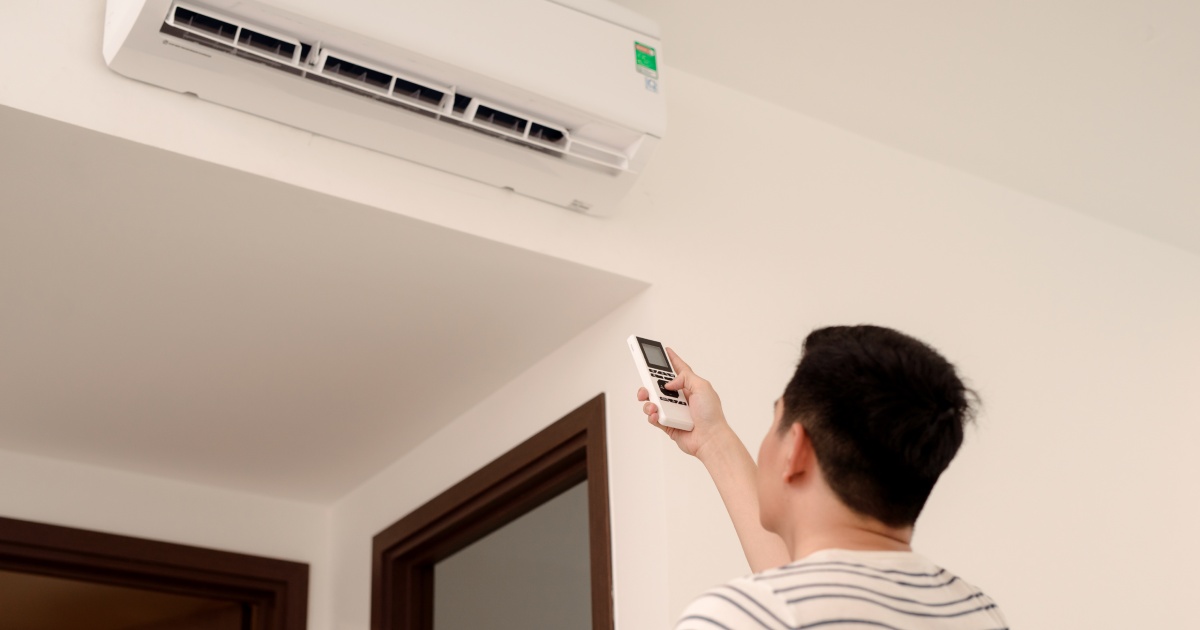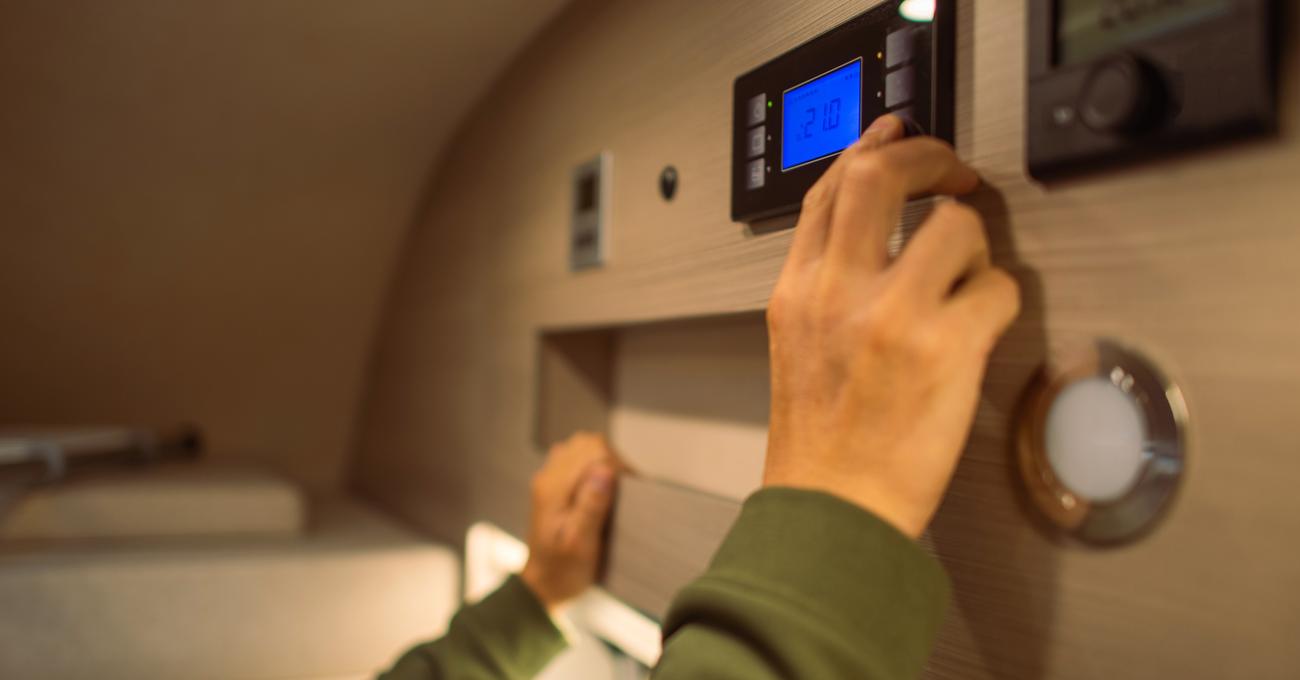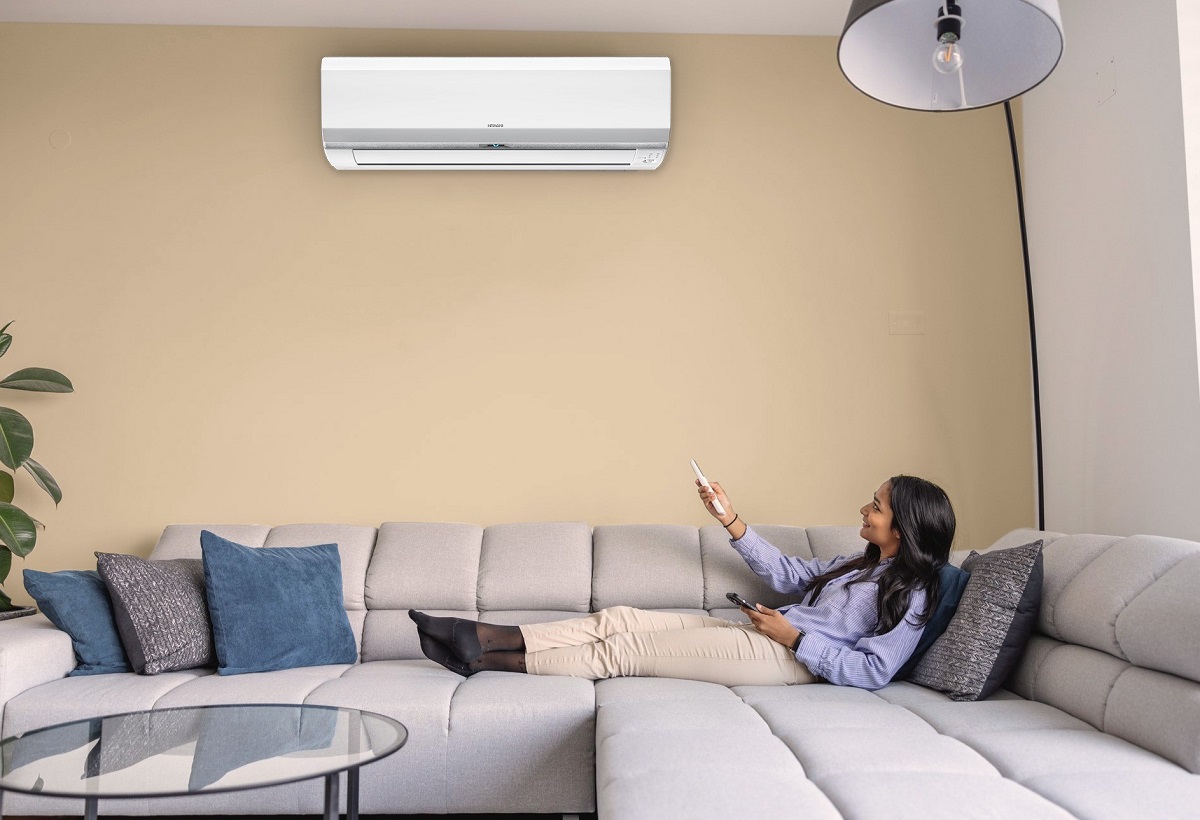

Articles
How Many Hours Should An AC Run Per Day
Modified: October 20, 2024
Learn everything you need to know about AC run time. Discover the ideal number of hours your air conditioner should run per day for maximum efficiency.
(Many of the links in this article redirect to a specific reviewed product. Your purchase of these products through affiliate links helps to generate commission for Storables.com, at no extra cost. Learn more)
Introduction
As the sweltering summer heat takes hold, many of us turn to our trusty air conditioning units to keep our homes cool and comfortable. But have you ever wondered how long you should be running your AC each day? Finding the right balance between comfort and energy efficiency is crucial in today’s world where sustainability and cost saving are paramount.
The runtime of an air conditioning unit depends on various factors, including the climate, insulation of your home, size of the space, and personal preferences. Understanding these factors can help you determine the optimal runtime for your AC, ensure energy efficiency, and prolong the lifespan of your equipment.
In this article, we will explore the different factors that affect the runtime of an AC unit and provide tips on how to strike the right balance to keep your home cool while minimizing energy consumption.
Key Takeaways:
- Finding the optimal runtime for your AC involves balancing comfort and energy efficiency. Consider factors like climate, insulation, and thermostat settings to strike the right balance.
- Implement energy-saving tips such as using fans, improving insulation, and minimizing heat sources to reduce AC runtime while maintaining a comfortable indoor environment.
Read more: How Long Should My HVAC Fan Run Per Hour
Factors Affecting the Runtime of an AC Unit
Several factors come into play when determining how long an air conditioning unit should run each day. Understanding these factors will help you make informed decisions about the runtime of your AC and optimize its performance. Let’s take a closer look at the key factors influencing AC runtime:
- Climate: The climate in which you live plays a significant role in how often and for how long you need to run your AC. In hotter regions with extreme temperatures, the AC may need to run for longer periods to maintain a comfortable indoor environment.
- Insulation: The insulation of your home affects how well it retains cool air. A well-insulated home can keep the cool air in and the hot air out, reducing the amount of time the AC needs to run.
- Size of the Space: The size of the room or area being cooled also impacts the runtime of the AC unit. Larger spaces typically require more time to cool down compared to smaller ones.
- Occupancy and Activity Levels: The number of people in the room and their level of activity can affect the cooling needs. A room with more occupants or increased physical activity may require more cooling, resulting in a longer AC runtime.
- Thermostat Settings: The settings on your thermostat dictate the temperature at which your AC will cycle on and off. Setting your thermostat too low will cause the AC to run for longer periods, while setting it higher can reduce runtime.
- Window Exposure: The amount of direct sunlight that enters through windows can impact the runtime of your AC. Rooms with greater exposure to sunlight may require longer cooling times to offset the heat gain.
- Equipment Efficiency: The efficiency of your AC unit directly affects its runtime. Older, less efficient models may need to run longer to achieve the desired cooling, while newer, energy-efficient units can cool a space more quickly.
It’s important to consider these factors collectively when determining the optimal runtime for your AC unit. Each factor can have a significant impact on how long your AC needs to run to maintain a comfortable and cooling environment.
Optimal Runtime for an AC Unit
Now that we understand the factors that influence the runtime of an air conditioning unit, let’s discuss what can be considered the optimal runtime for an AC. The goal is to strike a balance between keeping your home cool and comfortable while maximizing energy efficiency and cost savings.
While there is no one-size-fits-all answer to how long an AC should run, a general guideline is to aim for around 2 to 4 hours of continuous operation per day. However, this can vary based on the factors mentioned in the previous section. Here are a few considerations to help determine the optimal runtime for your AC:
- Comfort Level: The primary factor to consider is your comfort level. Your AC should run for a sufficient duration to maintain a comfortable indoor temperature. Adjust the runtime based on your personal preferences and the climate you are in.
- Energy Efficiency: Longer runtime means more energy consumption. To maximize energy efficiency, try to utilize passive cooling techniques such as keeping blinds closed during the day, using ceiling fans, and insulating your home effectively. These measures can help reduce the workload on your AC and, in turn, decrease its runtime.
- Maintenance and Lifespan: Excessive runtime can lead to more wear and tear on your AC unit, potentially shortening its lifespan. To extend the life of your equipment, consider periodic inspections, filter cleaning/replacement, and regular maintenance to ensure optimal performance.
- Programmable Thermostats: Investing in a programmable thermostat can help regulate the runtime of your AC more effectively. These devices allow you to set specific temperature schedules, enabling your AC to operate efficiently when needed and reduce runtime when the space is unoccupied.
- Zoning Systems: If your home has multiple zones, such as different floors or wings, consider investing in a zoning system. This allows you to control the temperature independently in each zone, optimizing runtime and energy usage.
It’s important to remember that these are general guidelines, and it’s recommended to adjust the runtime based on the unique characteristics of your home and your personal preferences. Regularly monitor the indoor temperature, energy consumption, and the overall performance of your AC unit to make informed decisions about its runtime.
By finding the optimal runtime for your air conditioning unit, you can strike a balance between keeping your home cool and comfortable, while also being mindful of energy efficiency and cost savings.
The general recommendation is for an AC to run for 15-20 minutes at a time, with 3-4 cycles per hour. This can vary based on factors like outdoor temperature and the size of the space being cooled.
Energy Efficiency Considerations
When it comes to running your AC unit, energy efficiency should be a top priority. Not only does it help reduce your environmental footprint, but it also helps cut down on energy costs. Here are some key energy efficiency considerations to keep in mind:
- SEER Rating: When purchasing a new air conditioning unit, look for one with a high Seasonal Energy Efficiency Ratio (SEER) rating. A higher SEER rating indicates better energy efficiency, meaning the AC will cool your space using less energy.
- Regular Maintenance: Proper maintenance is essential for ensuring the energy efficiency of your AC unit. Clean or replace air filters regularly, keep the outdoor unit clear of debris, and schedule professional maintenance to check the system’s efficiency and make any necessary repairs.
- Smart Thermostats: Consider upgrading to a smart thermostat, which allows you to program temperature settings and control your AC remotely. These devices can learn your cooling patterns and adjust the runtime based on your preferences, maximizing energy efficiency.
- Insulation and Weatherization: Improving the insulation of your home can significantly reduce the amount of cool air that seeps out, leading to a more energy-efficient cooling process. Properly sealing doors, windows, and ducts can also prevent cool air from escaping.
- Natural Ventilation: Before turning on your AC, take advantage of natural ventilation options. Opening windows and using ceiling or floor fans can help circulate cool air throughout your home, reducing the need for continuous AC operation.
- Set Temperature Wisely: Adjusting your thermostat by a few degrees can make a significant difference in energy consumption. Aim for a comfortable temperature rather than an excessively low setting, as each degree lower increases energy usage by approximately 3-5%.
- Consider Time-of-Use Rates: If your utility company offers time-of-use rates, take advantage of lower-cost electricity during off-peak hours. Program your AC to run more during these hours to save money and reduce the load on the electrical grid.
- Evaluate Ductwork: Leaky or uninsulated ductwork can result in energy loss and reduced cooling efficiency. Inspect your ducts for any leaks, kinks, or insulation issues. Sealing and insulating ducts can improve energy efficiency and reduce runtime.
By implementing these energy efficiency considerations, you can make your air conditioning unit more environmentally friendly and reduce your energy bills without compromising comfort.
Tips for Reducing AC Runtime
If you’re looking to lower the runtime of your air conditioning unit while maintaining a comfortable indoor environment, here are some effective tips to consider:
- Use Fans: Utilize ceiling fans or portable fans to circulate the air in the room. Fans create a wind chill effect, making you feel cooler without relying solely on the AC. This allows you to set the thermostat at a higher temperature and reduce AC runtime.
- Install Window Coverings: Opt for window coverings such as blinds, curtains, or shades to block out direct sunlight and heat. This helps keep your home cooler and reduces the workload on your AC, resulting in shorter runtime.
- Improve Home Insulation: Enhance the insulation in your home by sealing gaps and cracks around windows and doors. Additionally, insulate your attic, walls, and floors to prevent hot outdoor air from entering and cool indoor air from escaping, allowing your AC to run for shorter periods.
- Minimize Heat Sources: Be mindful of appliances and devices that generate heat, such as ovens, stoves, and dryers. Avoid using these heat-generating appliances during the hottest parts of the day to reduce the strain on your AC unit.
- Utilize Programmable Thermostats: Install programmable thermostats or smart thermostats to regulate the temperature based on your schedule. Set higher temperatures when you’re away from home and lower temperatures when you’re present, reducing AC runtime during vacant hours.
- Create Natural Ventilation: Open windows and doors in the evenings or early mornings when the outside temperature is cooler. Take advantage of natural cross-ventilation to bring in fresh air and cool down your space before relying on the AC.
- Maintain AC Filters: Regularly clean or replace the air filters in your AC unit. Clogged or dirty filters reduce airflow and force the AC to work harder, resulting in longer runtime. Clean filters ensure efficient operation and help maintain a comfortable temperature with shorter runtime.
- Consider Shades and Awnings: Install exterior shades or awnings on the windows facing direct sunlight. These additions can help block out the sun’s rays, preventing excessive heat from entering your home and reducing the need for prolonged AC operation.
By implementing these tips, you can reduce the runtime of your air conditioning unit, conserve energy, and enjoy a comfortable indoor environment without sacrificing your cooling needs. Remember, small adjustments and conscious energy-saving practices can add up to significant energy and cost savings over time.
Conclusion
When it comes to determining the optimal runtime for your air conditioning unit, it’s important to consider various factors such as climate, insulation, room size, and personal preferences. Striking the right balance between comfort and energy efficiency is key to keeping your home cool while minimizing energy consumption.
Familiarize yourself with the factors that influence AC runtime, such as climate conditions, insulation quality, and thermostat settings. By understanding these factors, you can make informed decisions about the runtime of your AC unit, ensuring it operates efficiently and effectively.
Energy efficiency considerations should also be top of mind. Investing in a high-efficiency AC unit, performing regular maintenance, and using programmable thermostats can help reduce energy consumption and lower your utility bills. Additionally, implementing strategies like proper insulation, natural ventilation, and utilizing fans can further reduce the runtime of your air conditioning unit.
By following the tips provided in this article, you can optimize the runtime of your AC, save energy, and increase the lifespan of your equipment. It’s important to monitor your AC’s performance regularly and make adjustments as necessary to maintain a comfortable indoor climate while minimizing energy usage.
Remember, finding the optimal runtime for your air conditioning unit is a balance between personal comfort, energy efficiency, and cost savings. By taking a holistic approach and considering the unique characteristics of your home, you can create a cool and comfortable living space while being mindful of your environmental impact.
So, take control of your AC runtime, make energy-conscious choices, and enjoy the perfect balance between comfort and sustainability.
Frequently Asked Questions about How Many Hours Should An AC Run Per Day
Was this page helpful?
At Storables.com, we guarantee accurate and reliable information. Our content, validated by Expert Board Contributors, is crafted following stringent Editorial Policies. We're committed to providing you with well-researched, expert-backed insights for all your informational needs.















0 thoughts on “How Many Hours Should An AC Run Per Day”